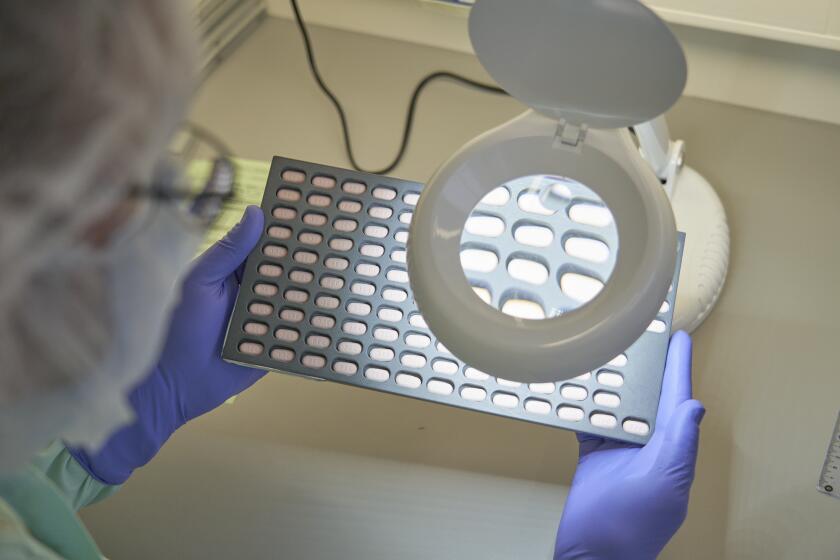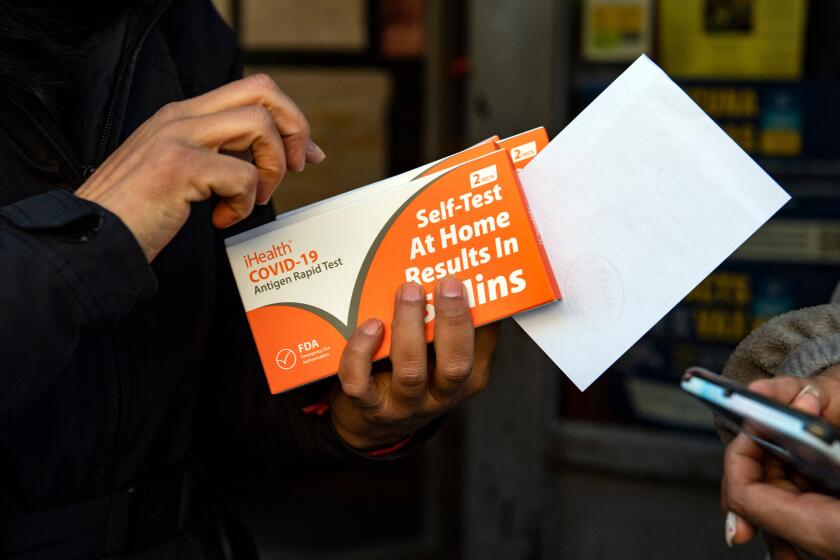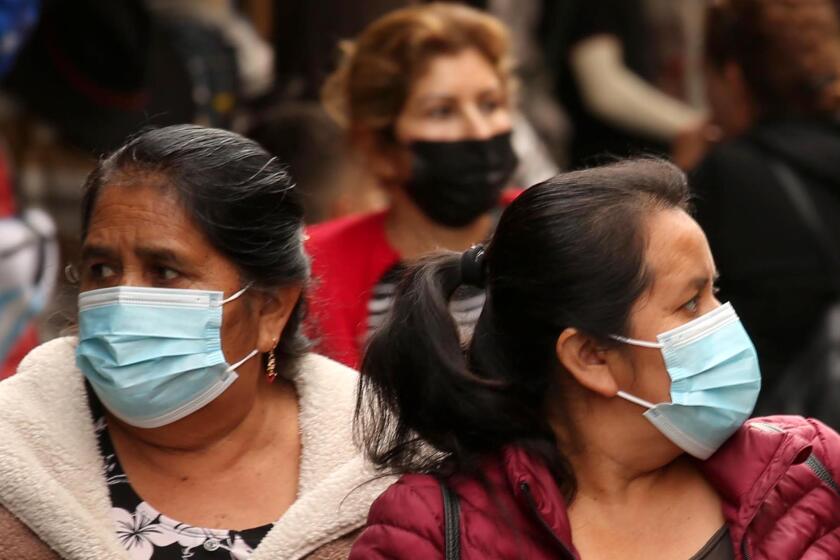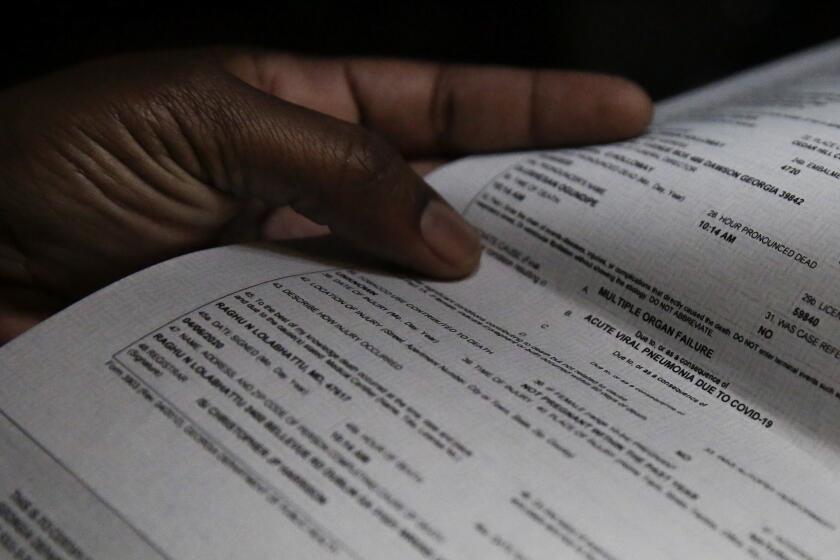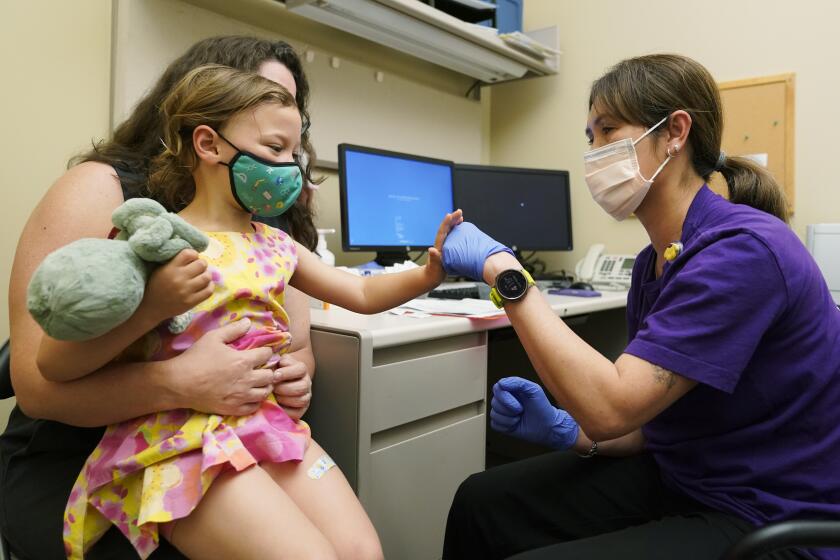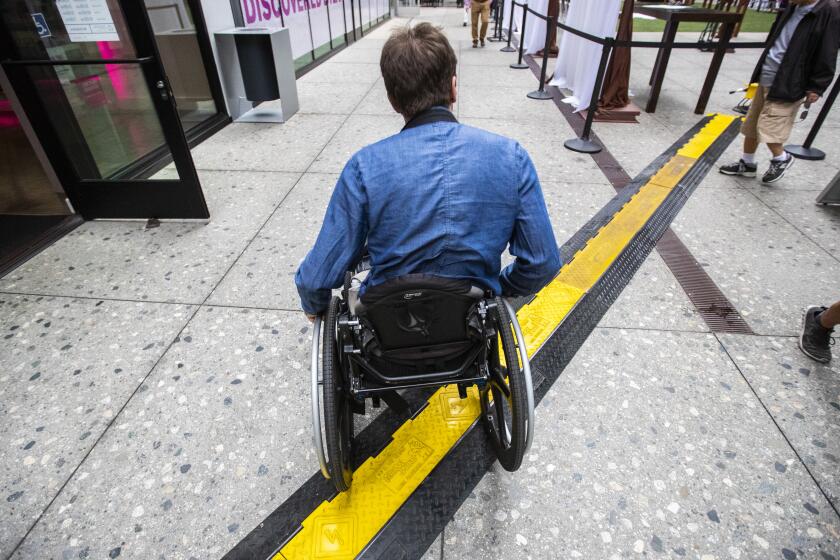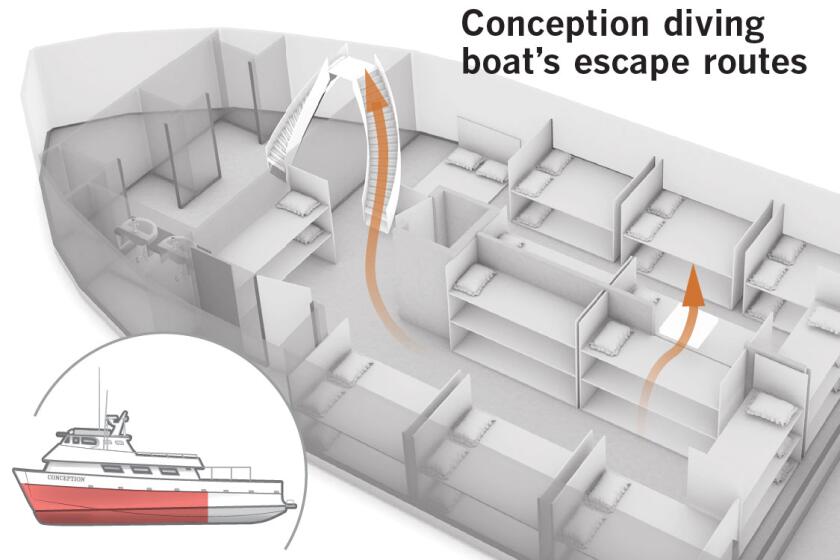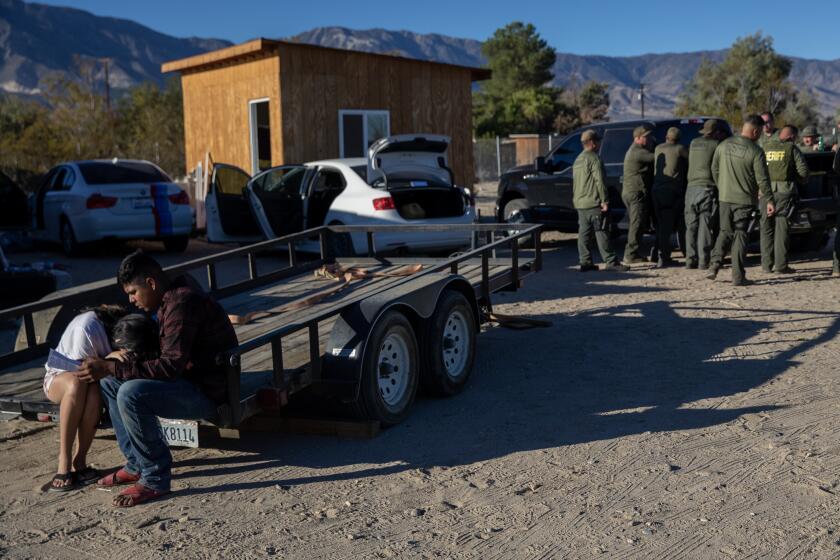‘A lot of viruses running around’: L.A. County hospital beds at lowest availability since pandemic began
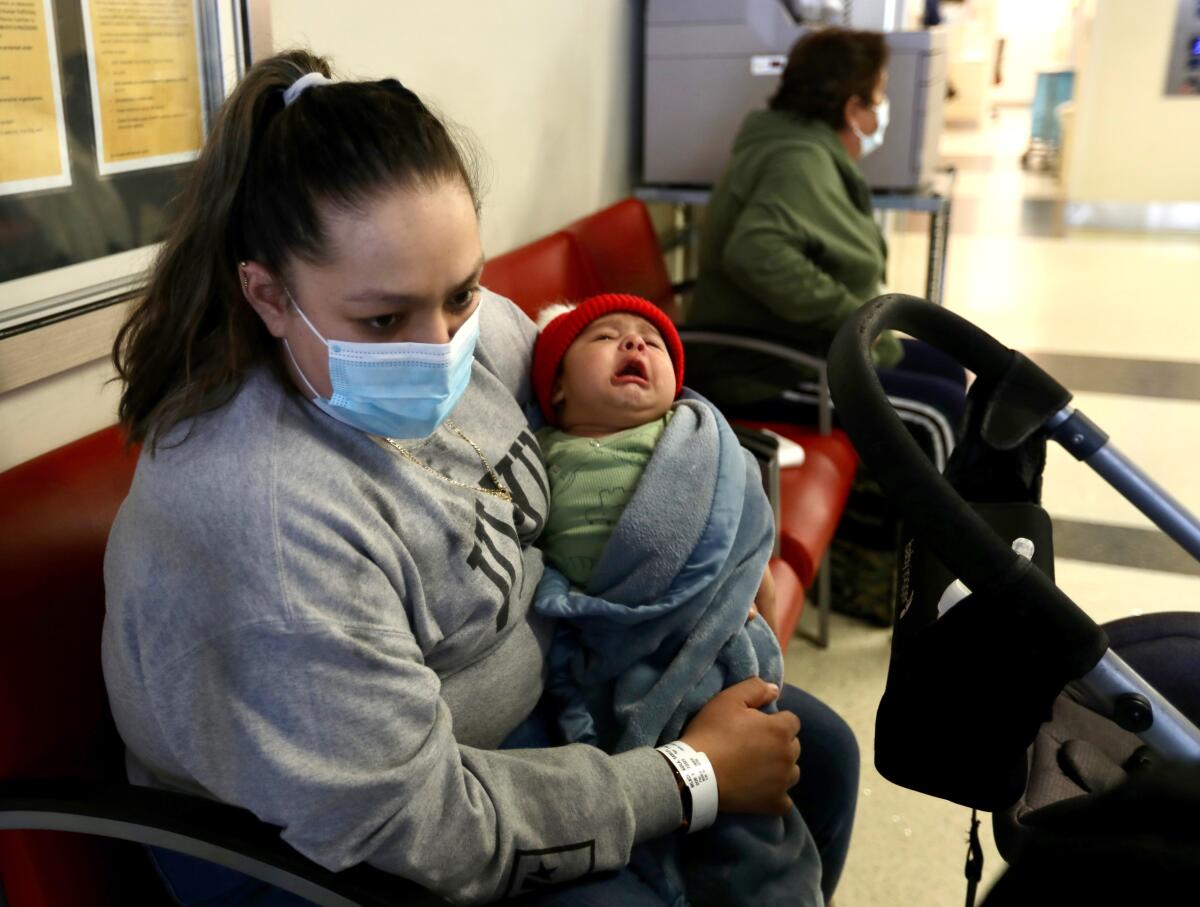
The number of available Los Angeles County hospital beds has fallen to its lowest level of the pandemic, the result not only of the enduring threat of COVID-19 and the reemergence of flu and RSV, but also the needs of a populace that put off nonemergency care.
Based on data collected from 90 hospitals, there were 242 adult beds available countywide as of Monday, L.A. County Public Health Director Barbara Ferrer told reporters Thursday. And, she added, “the average number of available beds so far in December is the lowest we have seen in the past four years.”
Comparing current conditions to the darkest days of the pandemic isn’t apples to apples, given that hospitals postponed many procedures and built up additional surge capacity during 2020 and into 2021. But with operations now more normalized, the situation illustrates the pressures exerted by the coronavirus and the wider respiratory virus season.
“It’s reasonable to speculate that part of the reason for the low number of available hospital beds is due to many patients seeking care that may have been delayed during earlier months of the pandemic and to the high circulating levels of respiratory viruses, resulting in a very high volume of patients,” she said.
Drugs such as Paxlovid and molnupiravir are free and widely available, but officials say doctors are not prescribing them as much as they should.
Furthermore, healthcare workers aren’t immune to what’s happening in their communities — meaning widespread transmission of respiratory viruses may force sick calls and hurt staff availability.
“We’ve also heard anecdotally from some hospitals that they’re struggling to staff beds due to high retirement rates and nurses leaving full-time positions for different opportunities,” Ferrer said.
However, there are some preliminary signs — at least on the COVID-19 front — that metrics are improving.
On Thursday, the U.S. Centers for Disease Control and Prevention said L.A. County hospitals were admitting 14.2 coronavirus-positive patients per week for every 100,000 residents, down 4% from the prior week. For the previous three weeks, L.A. County has seen week-over-week increases from 24% to 43%.
Reported coronavirus cases also are flattening. L.A. County recorded 2,991 new cases a day for the weekly period that ended Thursday, a 24% decrease from the seasonal peak, which occurred the first week of December. On a per capita basis, the latest rate is 207 cases a week for every 100,000 residents; a rate of 100 or more is considered high.
The Biden administration is making free coronavirus tests available to U.S. households again as part of a contingency plan for a possible COVID surge.
It’s important to note that the reported cases — which come in from hospitals or clinics — likely understate the true extent of infection. Many people are now self-diagnosing using at-home rapid tests, the results of which are not reliably reported to authorities.
Nationally, there have been estimates that true infection rates are perhaps five times the level of actual reported cases, Ferrer said. But the overall numbers can still be helpful; if you start seeing steep increases, “you know you’re in trouble,” she said.
Surveillance data show the coronavirus concentration in L.A. County wastewater actually exceeded the peak of the summer Omicron wave during the week ending Dec. 3, the most recent for which figures are available.
“The high wastewater concentrations remind us that even with slightly declining case counts, COVID transmission in L.A. County is still very high,” Ferrer said.
L.A. County’s case rate is down 18% from the prior week, but the numbers are still considered high.
The recent improvements in case and hospitalization metrics likely spell a reprieve from the prospect of a local indoor mask order that could’ve taken effect shortly after New Year’s Day. But such a mandate remains possible if transmission again begins to shoot upward.
“Now, we’ve kind of plateaued a little bit. I think we may increase again after Dec. 25 as more people are out of school, out of work, taking vacations, traveling and gathering. And I don’t have any way of knowing exactly how high that will go,” Ferrer said. “A lot of it depends on how many protections people are taking.”
COVID-19 deaths, in the meantime, are climbing. For the week that ended Thursday, L.A. County reported 112 deaths, up 37% from the prior week and the highest since early August.
The total of COVID-19 deaths in L.A. County is approaching 34,400. Included in that figure is another tragic milestone, as the county reported its 20th pediatric COVID-19 death this week, according to Ferrer.
Long COVID illnesses contributed to about 3,500 deaths in the U.S. through the end of June 2022, according to a new report from the Centers for Disease Control and Prevention.
Unlike the last two fall-and-winter seasons, hospitals are coping not only with COVID-19 but also with significant spread of flu, respiratory syncytial virus, or RSV, and other health concerns that were put off during the pandemic’s first year.
“These are still not normal times. There’s a lot of various viruses running around,” said Dr. Graham Tse, chief medical officer for Miller Children’s & Women’s Hospital Long Beach.
Cases of RSV, which “took off like a wildfire” late this summer, seem to have stopped climbing, but flu also has been sending people to the hospital, and COVID-19 cases have crept upward, Tse said this week.
“Flu is rising in many parts of the country, with probably the worst flu outbreak we’ve seen in a decade,” said Dr. Ashish Jha, the White House COVID-19 response coordinator. And nationwide, COVID-19 is “on an upswing, with [an] increasing number of cases.”
However, RSV appears to have peaked nationally and is on its way down, Jha said Thursday. Still, levels remain high in some areas of the country.
Pediatric hospitals across California continue to report stress from RSV and other respiratory illnesses, with some of the largest facilities unable to accommodate incoming patient transfers because of capacity limits in emergency departments.
U.S. regulators have cleared pediatric doses of the updated COVID-19 vaccines to children ages 6 months to 5 years.
So far, Tse said the increase has not put stress on his hospital’s intensive care unit in the same way as previous surges. If the numbers rise significantly, the hospital could double up patients in rooms or expand areas used for patient care.
Given the strain on hospitals, health experts say residents should take additional precautions to keep themselves and those around them from falling seriously ill.
People may gauge their personal risk differently, “but handwashing, social distancing, masking, not going out when you’re sick — all of that will help alleviate the stresses on the hospital and keep your loved ones and family safe,” Tse said.
Staying up to date on vaccines and getting the updated booster, which is formulated to protect against the original coronavirus strain as well as the Omicron subvariants that dominated much of the year, is also important, officials say.
“We’ve got the playbook. We’ve just got to put the playbook into action, and it’s go-time to do that,” said Dr. Rais Vohra, Fresno County’s interim health officer. “We know what to do. We just need everyone to kind of roll up their sleeves, literally.”
The COVID-19 pandemic’s silver lining for people with disabilities: a lot more remote work opportunities. Will it last?
The latest vaccination campaign has been slow. Only 34% of eligible L.A. County seniors 65 and older have received their updated booster since it became available in September, and just 22% of those 50-64 have gotten theirs. Of the youngest vaccinated adults — those up to 29 — only 9% have gotten the updated booster, as have 15% of those in their 30s and 40s.
Statewide, 19.4% of eligible Californians have received the bivalent booster.
The updated shot is now available in California for babies as young as 6 months old, a move that came following CDC action last week.
“The good news is vaccines do work,” Vohra said. “The bad news is we don’t have enough people getting their vaccine, especially their bivalent boosters.”
L.A. Reads
L.A. Guides
More to Read
Sign up for Essential California
The most important California stories and recommendations in your inbox every morning.
You may occasionally receive promotional content from the Los Angeles Times.
